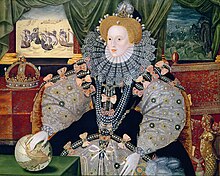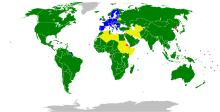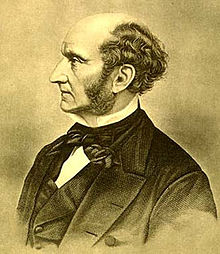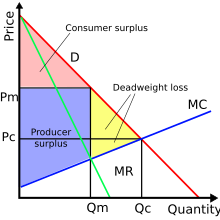Competition law
| Competition law |
|---|
 |
| Basic concepts |
| Anti-competitive practices |
| Enforcement authorities and organizations |
Competition law is the field of
The history of competition law reaches back to the Roman Empire. The business practices of market traders, guilds and governments have always been subject to scrutiny, and sometimes severe sanctions. Since the 20th century, competition law has become global.[6] The two largest and most influential systems of competition regulation are United States antitrust law and European Union competition law. National and regional competition authorities across the world have formed international support and enforcement networks.
Modern competition law has historically evolved on a national level to promote and maintain fair competition in markets principally within the territorial boundaries of
Principle
Competition law, or antitrust law, has three main elements:
- prohibiting agreements or practices that restrict free trading and competition between business. This includes in particular the repression of free trade caused by cartels.
- banning abusive behavior by a firm dominating a market, or anti-competitive practices that tend to lead to such a dominant position. Practices controlled in this way may include predatory pricing, tying, price gouging, and refusal to deal.
- supervising the mergers and acquisitions of large corporations, including some joint ventures. Transactions that are considered to threaten the competitive process can be prohibited altogether, or approved subject to "remedies" such as an obligation to divest part of the merged business or to offer licenses or access to facilities to enable other businesses to continue competing.
Substance and practice of competition law varies from jurisdiction to jurisdiction. Protecting the interests of consumers (
History
Roman legislation
An early example was enacted during the Roman Republic around 50 BC.[12] To protect the grain trade, heavy fines were imposed on anyone directly, deliberately, and insidiously stopping supply ships.[13] Under Diocletian in 301 A.D., an edict imposed the death penalty for anyone violating a tariff system, for example by buying up, concealing, or contriving the scarcity of everyday goods.[13] More legislation came under the constitution of Zeno of 483 A.D., which can be traced into Florentine municipal laws of 1322 and 1325.[14] This provided for confiscation of property and banishment for any trade combination or joint action of monopolies private or granted by the Emperor. Zeno rescinded all previously granted exclusive rights.[15] Justinian I subsequently introduced legislation to pay officials to manage state monopolies.[15]
Middle Ages
Legislation in England to control monopolies and restrictive practices was in force well before the
... we have ordained and established, that no merchant or other shall make Confederacy, Conspiracy, Coin, Imagination, or Murmur, or Evil Device in any point that may turn to the Impeachment, Disturbance, Defeating or Decay of the said Staples, or of anything that to them pertaineth, or may pertain.
In continental Europe, competition principles developed in
it is very hard and difficult to put certain prices to any such things ... [it is necessary because] prices of such victuals be many times enhanced and raised by the Greedy Covetousness and Appetites of the Owners of such Victuals, by occasion of ingrossing and regrating the same, more than upon any reasonable or just ground or cause, to the great damage and impoverishing of the King's subjects.[22]
Around this time organizations representing various tradesmen and handicrafts people, known as guilds had been developing, and enjoyed many concessions and exemptions from the laws against monopolies. The privileges conferred were not abolished until the Municipal Corporations Act 1835.
Early competition law in Europe

The English common law of

Europe around the 16th century was changing quickly. The
The development of early competition law in England and Europe progressed with the diffusion of writings such as
Modern competition law
While the development of competition law stalled in Europe during the late 19th century, in 1889
United States antitrust

The
Section 1 of the Sherman Act declared illegal "every contract, in the form of trust or otherwise, or conspiracy, in restraint of trade or commerce among the several States, or with foreign nations." Section 2 prohibits
With the Hart–Scott–Rodino Antitrust Improvements Act of 1976, mergers and acquisitions came into additional scrutiny from U.S. regulators. Under the act, parties must make a pre-merger notification to the U.S. Department of Justice and Federal Trade Commission prior to the completion of a transaction. As of February 2, 2021, the FTC reduced the Hart-Scott-Rodino reporting threshold to $92 million in combined assets for the transaction.[35]
European Union law
Competition law gained new recognition in Europe in the inter-war years, with Germany enacting its first anti-cartel law in 1923 and Sweden and Norway adopting similar laws in 1925 and 1926 respectively. However, with the
Today, the
Leading ECJ cases on competition law include Consten & Grundig v Commission and United Brands v Commission.
India
India responded positively by opening up its economy by removing controls during the Economic liberalisation. In quest of increasing the efficiency of the nation's economy, the Government of India acknowledged the Liberalization Privatization Globalization era. As a result, Indian market faces competition from within and outside the country.[40] This led to the need of a strong legislation to dispense justice in commercial matters and the Competition Act, 2002 was passed. The history of competition law in India dates back to the 1960s when the first competition law, namely the Monopolies and Restrictive Trade Practices Act (MRTP) was enacted in 1969. But after the economic reforms in 1991, this legislation was found to be obsolete in many aspects and as a result, a new competition law in the form of the Competition Act, 2002 was enacted in 2003. The Competition Commission of India, is the quasi judicial body established for enforcing provisions of the Competition Act.[41]
China
The Anti Monopoly Law of China came into effect in 2008. For years, it was enforced by three different branches of government, but since 2018 its enforcement has been the responsibility of the State Administration for Market Regulation. The People's Daily reported that the law had generated 11 billion RMB of penalties between 2008 and 2018.[42]
International expansion
By 2008 111 countries had enacted competition laws, which is more than 50 percent of countries with a population exceeding 80,000 people. 81 of the 111 countries had adopted their competition laws in the past 20 years, signaling the spread of competition law following the collapse of the Soviet Union and the expansion of the European Union.[43] Currently competition authorities of many states closely co-operate, on everyday basis, with foreign counterparts in their enforcement efforts, also in such key area as information / evidence sharing.[44]
In many of Asia's developing countries, including India, Competition law is considered a tool to stimulate economic growth. In Korea and Japan, the competition law prevents certain forms of conglomerates. In addition, competition law has promoted fairness in China and Indonesia as well as international integration in Vietnam.[1] Hong Kong's Competition Ordinance came into force in the year 2015.[45]
ASEAN member states
As part of the creation of the ASEAN Economic Community, the member states of the
Enforcement

Competition law is enforced at the national level through competition authorities, as well as private enforcement. The
Every violation of the antitrust laws is a blow to the free-enterprise system envisaged by Congress. This system depends on strong competition for its health and vigor, and strong competition depends, in turn, on compliance with antitrust legislation. In enacting these laws, Congress had many means at its disposal to penalize violators. It could have, for example, required violators to compensate federal, state, and local governments for the estimated damage to their respective economies caused by the violations. But, this remedy was not selected. Instead, Congress chose to permit all persons to sue to recover three times their actual damages every time they were injured in their business or property by an antitrust violation.
In the
Some EU Member States enforce their competition laws with criminal sanctions. As analysed by Whelan, these types of sanctions engender a number of significant theoretical, legal and practical challenges.[55]
Antitrust administration and legislation can be seen as a balance between:
- guidelines which are clear and specific to the courts, regulators and business but leave little room for discretion that prevents the application of laws from resulting in unintended consequences.
- guidelines which are broad, hence allowing administrators to sway between improving economic outcomes versus succumbing to political policies to redistribute wealth.[56]
Chapter 5 of the post-war
Theory
Classical perspective
Under the doctrine of laissez-faire, antitrust is seen as unnecessary as competition is viewed as a long-term dynamic process where firms compete against each other for market dominance. In some markets, a firm may successfully dominate, but it is because of superior skill or innovativeness. However, according to laissez-faire theorists, when it tries to raise prices to take advantage of its monopoly position it creates profitable opportunities for others to compete. A process of creative destruction begins which erodes the monopoly. Therefore, government should not try to break up monopoly but should allow the market to work.[60]

The classical perspective on competition was that certain agreements and business practice could be an unreasonable restraint on the
A monopoly granted either to an individual or to a trading company has the same effect as a secret in trade or manufactures. The monopolists, by keeping the market constantly under-stocked, by never fully supplying the effectual demand, sell their commodities much above the natural price, and raise their emoluments, whether they consist in wages or profit, greatly above their natural rate.[61]
In The Wealth of Nations (1776) Adam Smith also pointed out the cartel problem, but did not advocate specific legal measures to combat them.
People of the same trade seldom meet together, even for merriment and diversion, but the conversation ends in a conspiracy against the public, or in some contrivance to raise prices. It is impossible indeed to prevent such meetings, by any law which either could be executed, or would be consistent with liberty and justice. But though the law cannot hinder people of the same trade from sometimes assembling together, it ought to do nothing to facilitate such assemblies; much less to render them necessary.[62]
By the latter half of the 19th century, it had become clear that large firms had become a fact of the market economy. John Stuart Mill's approach was laid down in his treatise On Liberty (1859).
Again, trade is a social act. Whoever undertakes to sell any description of goods to the public, does what affects the interest of other persons, and of society in general; and thus his conduct, in principle, comes within the jurisdiction of society... both the cheapness and the good quality of commodities are most effectually provided for by leaving the producers and sellers perfectly free, under the sole check of equal freedom to the buyers for supplying themselves elsewhere. This is the so-called doctrine of Free Trade, which rests on grounds different from, though equally solid with, the principle of individual liberty asserted in this Essay. Restrictions on trade, or on production for purposes of trade, are indeed restraints; and all restraint, qua restraint, is an evil...[63]
Neo-classical synthesis
After Mill, there was a shift in economic theory, which emphasized a more precise and theoretical model of competition. A simple neo-classical model of free markets holds that production and distribution of goods and services in competitive free markets maximizes
Contrasting with the allocatively, productively and dynamically efficient market model are monopolies, oligopolies, and cartels. When only one or a few firms exist in the market, and there is no credible threat of the entry of competing firms, prices rise above the competitive level, to either a monopolistic or oligopolistic equilibrium price. Production is also decreased, further decreasing
Chicago school

A group of economists and lawyers, who are largely associated with the University of Chicago, advocate an approach to competition law guided by the proposition that some actions that were originally considered to be anticompetitive could actually promote competition.[69] The U.S. Supreme Court has used the Chicago school approach in several recent cases.[70] One view of the Chicago school approach to antitrust is found in United States Circuit Court of Appeals Judge Richard Posner's books Antitrust Law[71] and Economic Analysis of Law.[72]
Practice
Collusion and cartels

Dominance and monopoly

When firms hold large market shares, consumers risk paying higher prices and getting lower quality products than compared to competitive markets. However, the existence of a very high market share does not always mean consumers are paying excessive prices since the threat of new entrants to the market can restrain a high-market-share firm's price increases. Competition law does not make merely having a monopoly illegal, but rather abusing the power that a monopoly may confer, for instance through exclusionary practices.
First, it is necessary to determine whether a firm is dominant, or whether it behaves "to an appreciable extent independently of its competitors, customers and ultimately of its consumer".
Forms of abuse relating directly to pricing include price exploitation. It is difficult to prove at what point a dominant firm's prices become "exploitative" and this category of abuse is rarely found. In one case however, a French funeral service was found to have demanded exploitative prices, and this was justified on the basis that prices of funeral services outside the region could be compared.[86] A more tricky issue is predatory pricing. This is the practice of dropping prices of a product so much that one's smaller competitors cannot cover their costs and fall out of business. The Chicago school considers predatory pricing to be unlikely.[87] However, in France Telecom SA v. Commission[88] a broadband internet company was forced to pay $13.9 million for dropping its prices below its own production costs. It had "no interest in applying such prices except that of eliminating competitors"[89] and was being cross-subsidized to capture the lion's share of a booming market. One last category of pricing abuse is price discrimination.[90] An example of this could be a company offering rebates to industrial customers who export their sugar, but not to customers who are selling their goods in the same market.[91]
Example
According to The World Bank's "Republic of Armenia Accumulation, Competition, and Connectivity Global Competition" report which was published in 2013, the Global Competitiveness Index suggests that Armenia ranks lowest among ECA (Europe and Central Asia) countries in the effectiveness of anti-monopoly policy and the intensity of competition. This low ranking somehow explains the low employment and low incomes in Armenia.[92]
Mergers and acquisitions
A merger or acquisition involves, from a competition law perspective, the concentration of economic power in the hands of fewer than before.[93] This usually means that one firm buys out the shares of another. The reasons for oversight of economic concentrations by the state are the same as the reasons to restrict firms who abuse a position of dominance, only that regulation of mergers and acquisitions attempts to deal with the problem before it arises, ex ante prevention of market dominance.[94] In the United States merger regulation began under the Clayton Act, and in the European Union, under the Merger Regulation 139/2004 (known as the "ECMR").[95] Competition law requires that firms proposing to merge gain authorization from the relevant government authority. The theory behind mergers is that transaction costs can be reduced compared to operating on an open market through bilateral contracts.[96] Concentrations can increase economies of scale and scope. However often firms take advantage of their increase in market power, their increased market share and decreased number of competitors, which can adversely affect the deal that consumers get. Merger control is about predicting what the market might be like, not knowing and making a judgment. Hence the central provision under EU law asks whether a concentration would, if it went ahead, "significantly impede effective competition... in particular as a result of the creation or strengthening off a dominant position..."[97] and the corresponding provision under US antitrust states similarly,
No person shall acquire, directly or indirectly, the whole or any part of the stock or other share capital... of the assets of one or more persons engaged in commerce or in any activity affecting commerce, where... the effect of such acquisition, of such stocks or assets, or of the use of such stock by the voting or granting of proxies or otherwise, may be substantially to lessen competition, or to tend to create a monopoly.[98]
What amounts to a substantial lessening of, or significant impediment to competition is usually answered through empirical study. The market shares of the merging companies can be assessed and added, although this kind of analysis only gives rise to presumptions, not conclusions.
Intellectual property, innovation and competition
Competition law has become increasingly intertwined with intellectual property, such as copyright, trademarks, patents, industrial design rights and in some jurisdictions trade secrets.[108] It is believed that promotion of innovation through enforcement of intellectual property rights may promote as well as limit competitiveness. The question rests on whether it is legal to acquire monopoly through accumulation of intellectual property rights. In which case, the judgment needs to decide between giving preference to intellectual property rights or to competitiveness:
- Should antitrust laws accord special treatment to intellectual property.
- Should intellectual rights be revoked or not granted when antitrust laws are violated.
Concerns also arise over anti-competitive effects and consequences due to:
- Intellectual properties that are collaboratively designed with consequence of violating antitrust laws (intentionally or otherwise).
- The further effects on competition when such properties are accepted into industry standards.
- Cross-licensing of intellectual property.
- Bundling of intellectual property rights to long-term business transactions or agreements to extend the market exclusiveness of intellectual property rights beyond their statutory duration.
- Trade secrets, if they remain a secret, having an eternal length of life.
Some scholars suggest that a prize instead of patent would solve the problem of deadweight loss, when innovators got their reward from the prize, provided by the government or non-profit organization, rather than directly selling to the market, see Millennium Prize Problems. However, innovators may accept the prize only when it is at least as much as how much they earn from patent, which is a question difficult to determine.[109]
See also
- Consumer protection
- European Union competition law
- The History of the Standard Oil Company (book)
- Institute for Consumer Antitrust Studies
- Irish Competition law
- List of competition regulators
- List of countries' copyright length
- Relevant market
- Resale price maintenance
- Sherman Antitrust Act
- SSNIP
- United States antitrust law
- Megacorporation
Notes
- ^ SSRN 2281756.
- ^ ISBN 978-0-521-86389-6. Archivedfrom the original on 14 December 2022. Retrieved 22 March 2023.
- ^ Cartel Damage Claims (CDC). "Cartel Damage Claims (CDC)". www.carteldamageclaims.com/. Archived from the original on 12 April 2024. Retrieved 23 June 2014.
- ^ "Antitrust: Overview – Competition – European Commission". ec.europa.eu. Archived from the original on 5 February 2020. Retrieved 27 June 2017.
- ^ "Trust Busting - Ohio History Central". ohiohistorycentral.org. Archived from the original on 21 February 2023. Retrieved 21 February 2023.
- ISSN 2329-9134. Archived from the originalon 23 June 2017. Retrieved 25 September 2015.
- ^ JG Castel, 'The Extraterritorial Effects of Antitrust Laws' (1983) 179 Recueil des Cours 9
- ISBN 978-0-521-86389-6. Archivedfrom the original on 14 December 2022. Retrieved 22 March 2023.
- ^ Vitali S, Glattfelder JB, Battiston S (2011) The Network of Global Corporate Control. PLoS ONE 6(10): e25995. doi:10.1371/journal.pone.0025995 https://journals.plos.org/plosone/article/file?id=10.1371/journal.pone.0025995&type=printable Archived 15 March 2023 at the Wayback Machine
- ^ see, Organisation for Economic Co-operation and Development's Regulation and Sectors Archived 6 October 2021 at the Wayback Machine page.
- ^ Bork (1993), p. 56
- ^ This is Julius Caesar's time according to Babled in De La Cure Annone chez le Romains.
- ^ a b Wilberforce (1966) p. 20
- ^ Wilberforce (1966) p. 22
- ^ a b c Wilberforce (1966) p. 21
- ^ Pollock and Maitland, History of English Law Vol. II, 453
- ^ 51 & 52 Hen. 3, Stat. 1
- ^ 51 & 52 Hen. 3, Stat. 6
- ^ Wilberforce (1966) p. 23
- ^ 23 Edw. 3.
- ^ 27 Edw. 3, Stat. 2, c. 25
- ^ 25 Hen. 8, c. 2.
- ^ "... the modern common law of England [has] passed directly into the legislation and thereafter into the judge-made law of the United States." Wilberforce (1966) p. 7
- ^ (1414) 2 Hen. 5, 5 Pl. 26
- ^ ISBN 978-0-521-19646-8. Archivedfrom the original on 12 April 2024. Retrieved 22 October 2020.
- ^ according to William Searle Holdsworth, 4 Holdsworth, 3rd ed., Chap. 4 p. 346
- ^ (1602) 11 Co. Rep. 84b
- ^ For example one John Manley paid p.a. from 1654 to the Crown for a tender on the "postage of letters both inland and foreign" Wilberforce (1966) p. 18
- ^ (1685) 10 St. Tr. 371
- ISBN 978-0-521-19646-8. Archivedfrom the original on 12 April 2024. Retrieved 22 October 2020.
- ^ ISBN 978-0-521-19646-8. Archivedfrom the original on 12 April 2024. Retrieved 22 October 2020.
- ISBN 978-0-521-19646-8. Archivedfrom the original on 12 April 2024. Retrieved 22 October 2020.
- ISBN 978-0-521-19646-8. Archivedfrom the original on 12 April 2024. Retrieved 22 October 2020.
- ISBN 978-0-521-19646-8. Archivedfrom the original on 12 April 2024. Retrieved 22 October 2020.
- ^ "FTC Announces Reduced Hart-Scott-Rodino Act Thresholds For 2021". Seyfarth Shaw - FTC Announces Reduced Hart-Scott-Rodino Act Thresholds For 2021. Archived from the original on 12 April 2021. Retrieved 12 April 2021.
- ISBN 978-0-521-19646-8.
- ISBN 978-0-521-19646-8.
- ISSN 2329-9134. Archived from the originalon 23 June 2017. Retrieved 29 April 2015.
- ^ "EUR-Lex – 32004R0139 – EN – EUR-Lex". eur-lex.europa.eu. Archived from the original on 21 January 2014. Retrieved 27 June 2017.
- ISSN 2319-8338
- ^ "CCI formation". CCI. Archived from the original on 14 April 2021. Retrieved 4 January 2013.
- ^ "China's updated Anti-monopoly Law criticised for not doing enough". South China Morning Post. 9 January 2020. Archived from the original on 27 October 2022. Retrieved 27 October 2022.
- ISBN 978-0-521-19646-8.
- ^ Marek Martyniszyn, Inter-Agency Evidence Sharing in Competition Law Enforcement Archived 12 April 2024 at the Wayback Machine, 19(1) International Journal of Evidence and Proof 11 (2015)
- ^ "Competition Commission – The Competition Ordinance (Cap 619)". www.compcomm.hk. Archived from the original on 12 June 2017. Retrieved 27 June 2017.
- ^ "Overview – ASEAN | ONE VISION ONE IDENTITY ONE COMMUNITY". ASEAN | ONE VISION ONE IDENTITY ONE COMMUNITY. Archived from the original on 28 February 2018. Retrieved 28 February 2018.
- ^ "Competition Law in ASEAN: Where Are We Now, And Where Are We Headed? | Conventus Law". www.conventuslaw.com. 19 June 2016. Archived from the original on 28 February 2018. Retrieved 28 February 2018.
- ^ "EU Competition Law: A Roadmap for ASEAN?" | EU Centre in Singapore". www.eucentre.sg. Archived from the original on 28 February 2018. Retrieved 28 February 2018.
- ^ "Expert Guides – A new era for competition law in the ASEAN region". Expert Guides. Archived from the original on 28 February 2018. Retrieved 28 February 2018.
- ^ Hawaii v. Standard Oil Co. of California, 405 U.S. 251 (1972), 262.
- ^ Office of Fair Trading, Modernisation: Understanding competition law Archived 18 May 2023 at the Wayback Machine, p. 4, published December 2004, accessed 27 November 2023
- ^ "EUR-Lex – 32003R0001 – EN – EUR-Lex". eur-lex.europa.eu. Archived from the original on 17 February 2014. Retrieved 27 June 2017.
- ^ "EUR-Lex – 52005DC0672 – EN – EUR-Lex". eur-lex.europa.eu. Archived from the original on 4 November 2013. Retrieved 27 June 2017.
- ^ "European Commission – PRESS RELEASES – Press release – European Commission Green Paper on damages actions for breach of EC Treaty antitrust rules – frequently asked questions". europa.eu. Archived from the original on 1 May 2012. Retrieved 27 June 2017.
- ^ Peter Whelan, The Criminalization of European Cartel Enforcement: Theoretical, Legal and Practical Challenges Archived 16 November 2015 at the Wayback Machine, Oxford University Press, 2014
- ^ McEwin, R Ian (2003). "COMPETITION LAW IN A SMALL OPEN ECONOMY". University of New South Wales Law Journal. 15: 246. Archived from the original on 25 February 2021. Retrieved 9 October 2009.
- ^ see a speech by Wood, The Internationalisation of Antitrust Law: Options for the Future 3 February 1995, at http://www.usdoj.gov/atr/public/speeches/future.txt Archived 10 February 2005 at the Wayback Machine
- ^ Whish (2003) p. 448
- ^ see, http://www.internationalcompetitionnetwork.org/ Archived 20 April 2021 at the Wayback Machine
- ^ Campbell R. McConnell, Stanley L. Brue. Economics: Principles, Problems, and Policies. McGraw-Hill Professional, 2005. pp. 601–02
- ^ Smith (1776) Book I, Chapter 7, para 26
- ^ Smith (1776) Book I, Chapter 10, para 82
- ^ Mill (1859) Chapter V, para 4
- Kenneth Galbraith, The New Industrial State(1967)
- ^ Joseph Schumpeter, The Process of Creative Destruction (1942)
- ^ Whish (2003), p. 14.
- JSTOR 1807048.
- JSTOR 2296233.
- (PDF) from the original on 12 April 2024. Retrieved 12 December 2023.
- Leegin Creative Leather Products Inc. v. PSKS Inc., 551 U.S. ___ (2007).
- ISBN 978-0-226-67576-3.
- ISBN 978-0-7355-6354-4.
- ISBN 978-0-465-00369-3.
- ^ a b Bork (1978), p. 405.
- ^ Bork (1978), p. 406.
- ISSN 0040-4411.
- ^ Brooke Group v. Williamson, 509 U.S. 209 (1993).
- ^ C-27/76 United Brands Continental BV v. Commission [1978] ECR 207
- ^ C-85/76 Hoffmann-La Roche & Co AG v. Commission [1979] ECR 461
- ^ AKZO [1991]
- ^ Michelin [1983]
- ^ Continental Can [1973]
- ^ Art. 82 (b) Porto di Genova [1991]
- ^ Case T-201/04 Archived 24 December 2013 at the Wayback Machine Microsoft v. Commission Order, 22 December 2004
- Commercial Solvents[1974]
- ^ C-30/87 Archived 24 December 2013 at the Wayback Machine Corinne Bodson v. SA Pompes funèbres des régions libérées [1987] ECR 2479
- ^ see, e.g. Posner (1998) p. 332; "While it is possible to imagine cases in which predatory pricing would be a rational stragy, it should be apparent by now why confirmed cases of it are rare."
- ^ Case T-340/03 France Telecom SA v. Commission
- ^ AKZO [1991] para 71
- ^ in the EU under Article 82(2)c)
- ^ Irish Sugar [1999]
- ^ The World Bank. Republic of Armenia Accumulation, Competition, and Connectivity Global Competition (PDF). The World Bank. Archived (PDF) from the original on 7 May 2019. Retrieved 7 May 2019.
- European Community Merger Regulation
- Court of First Instancewrote merger control is there "to avoid the establishment of market structures which may create or strengthen a dominant position and not need to control directly possible abuses of dominant positions"
- ^ The authority for the Commission to pass this regulation is found under Art. 83 TEC
- doi:10.1111/j.1468-0335.1937.tb00002.x. Archived from the original(PDF) on 13 January 2007. Retrieved 10 February 2007.
- ^ Art. 2(3) Reg. 129/2005
- ^ Clayton Act Section 7, codified at 15 U.S.C. § 18
- ^ see, for instance para 17, Guidelines on the assessment of horizontal mergers (2004/C 31/03)
- ^ C-68/94 France v. Commission [1998] ECR I-1375, para. 219
- ^ Italian Flat Glass [1992] ECR ii-1403
- ^ T-342/99 Airtours plc v. Commission [2002] ECR II-2585, para 62
- ^ Mannesmann, Vallourec and Ilva [1994] CMLR 529, OJ L102 21 April 1994
- ^ see the argument put forth in Hovenkamp H (1999) Federal Antitrust Policy: The Law of Competition and Its Practice, 2nd Ed, West Group, St. Paul, Minnesota. Unlike the authorities however, the courts take a dim view of the efficiencies defense.
- ^ Kali und Salz AG v. Commission [1975] ECR 499
- ^ Time Warner/AOL [2002] 4 CMLR 454, OJ L268
- ^ e.g. Guinness/Grand Metropolitan [1997] 5 CMLR 760, OJ L288; Many in the US disapprove of this approach, see W. J. Kolasky, Conglomerate Mergers and Range Effects: It's a long way from Chicago to Brussels 9 November 2001, Address before George Mason University Symposium Washington, DC.
- ^ Antitrust Enforcement and Intellectual Property Rights: Promoting Innovation and Competition (PDF) (Report). U.S. Department of Justice and Federal Trade Commission. April 2007. Archived (PDF) from the original on 30 May 2009. Retrieved 9 October 2009.
- ^ Suzanne Scotchmer: "Innovation and Incentives" the MIT press, 2004 (Chapter 2).
References
- ISBN 0-465-00369-9
- _____ (1993). The Antitrust Paradox (second edition). New York: Free Press. ISBN 0-02-904456-1.
- Friedman, Milton (1999) "The Business Community's Suicidal Impulse", Cato Policy Report, 21(2), pp. 6–7 (scroll down & press +).
- Galbraith Kenneth(1967) The New Industrial State
- Harrington, Joseph E. (2008). "antitrust enforcement," The New Palgrave Dictionary of Economics, 2nd Edition. Abstract.
- Mill, John Stuart (1859) On Liberty
- _____ (2007) Economic Analysis of Law 7th ed., ISBN 978-0-7355-6354-4
- Prosser, Tony (2005) The Limits of Competition Law, ch.1
- Rubinfeld, D.L. (2001), "Antitrust Policy", International Encyclopedia of the Social & Behavioral Sciences, pp. 553–560, ISBN 9780080430768
- Schumpeter, Joseph (1942) The Process of Creative Destruction
- Smith, Adam (1776) An Enquiry into the Nature and Causes of the Wealth of Nations online from the Adam Smith Institute
- LCCN 66-70116
- Whish, Richard (2003) Competition Law, 5th Ed. Lexis Nexis Butterworths
- https://anali.rs/the-klobuchar-bill-is-something-rotten-in-the-us-antitrust-legislative-reform/
Further reading
- Competition Policy International,
- Elhauge, Einer, Geradin, Damien (2007) Global Competition Law and Economics, ISBN 1-84113-465-1
- Faull, Jonathan, Nikpay, Ali (eds) (2007) "Faull & Nikpay : The EC Law of Competition," ISBN 978-0-19-926929-7
- Georg Erber, Georg, Kooths, Stefan, '"Windows Vista: Securing Itself against Competition?'," in: DIW Weekly Report, 2/2007, Vol.3, 7–14.
- Hylton, Keith N., et al., "Antitrust World Reports'," available at https://web.archive.org/web/20080724022203/http://www.antitrustworldwiki.com/
